Now that summer’s on the way, create this nifty upright planter on wheels for your favourite climbing crops.
You will need: 20mm x 40mm treated timber (approx. 3.2m), 25mm x 25mm treated timber (approx. 1m), 280mm x 20mm treated timber (approx. 2.5m), 19mm treated plywood, 20mm exterior screws, 40mm galvanised nails, drill with 10mm drill bit, exterior pva glue, four castors suitable for outdoor use, hammer, galvanised square wire netting (actual width 920mm), paint stirrer, pencil, Resene Waterborne Woodsman tinted to Resene Kwila, sandpaper, saw, screwdriver, staple gun with stainless steel staples, tape measure and tin snips.
The benefits of wheels: Having a planter on wheels is great for moving plants around a deck or patio so they get maximum (or minimum) sun, and tender plants could be wheeled into a conservatory over the winter months.
To get the look: Mark stained the low raised bed behind with Resene Waterborne Woodsman tinted to Resene Grey Green.
Handy hint: Mulching the planter as we did (with red bark chips) will help to retain moisture in the soil and deter weed growth.
 Step one
Step one  Step two
Step two  Step three
Step three  Step four
Step four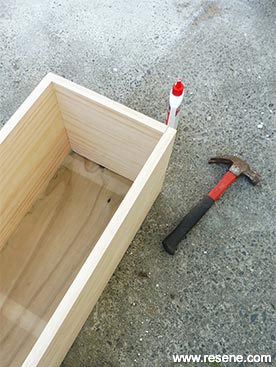 Step five
Step five  Step six
Step six 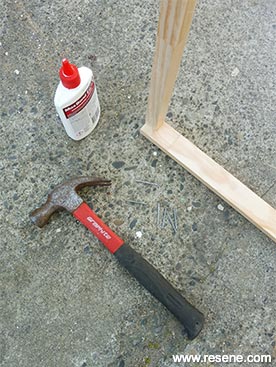 Step seven
Step seven 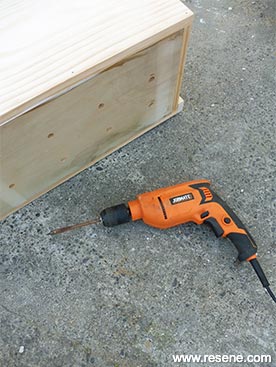 Step eight
Step eight  Step nine
Step nine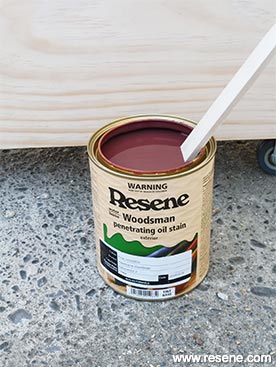 Step ten
Step ten Step eleven
Step eleven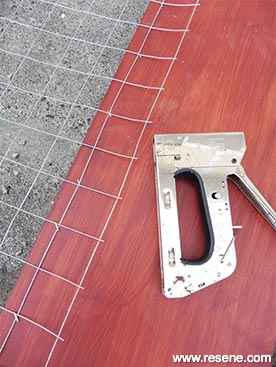 Step twelve
Step twelveTo finish off: Fill the planter with good-quality potting mix and plant up with your favourite climbing crops and/or flowers – we chose runner beans and marigolds.
Here's another idea: Plant up with an evergreen climber and use this planter on wheels as a movable screen around an entertainment or sitting area.
Words and photos by Mark Rayner